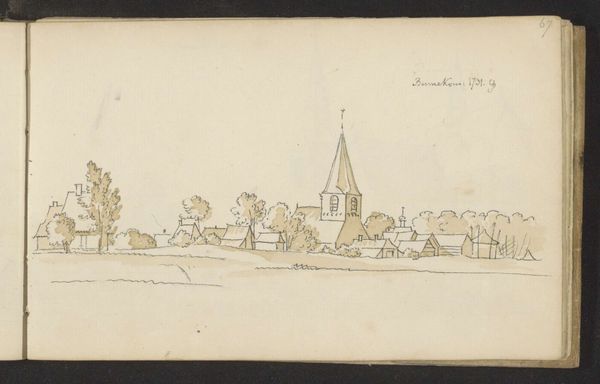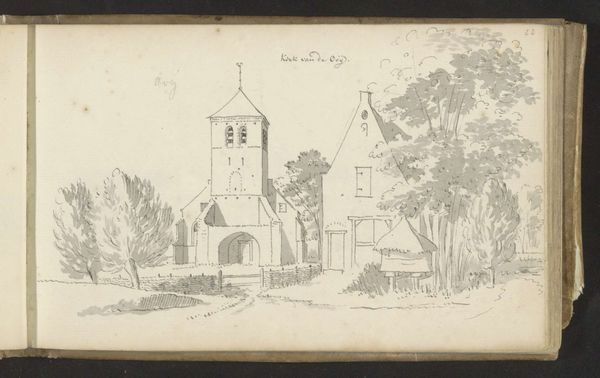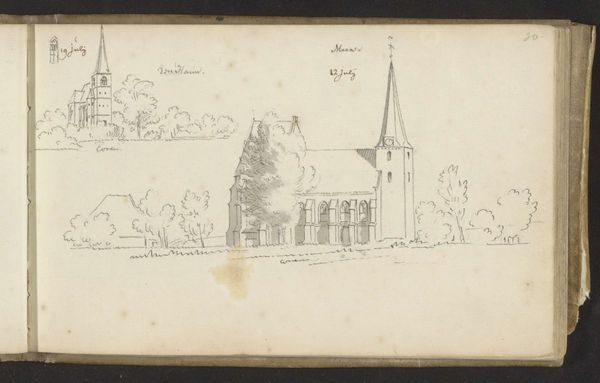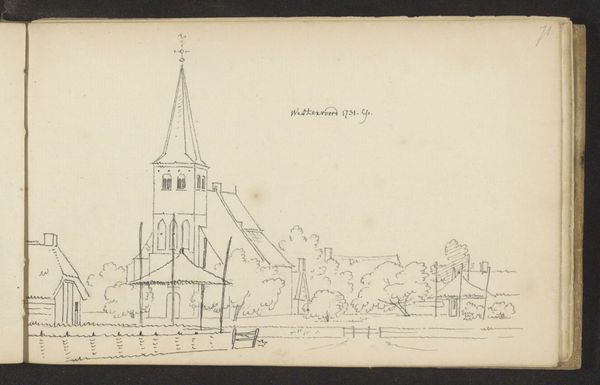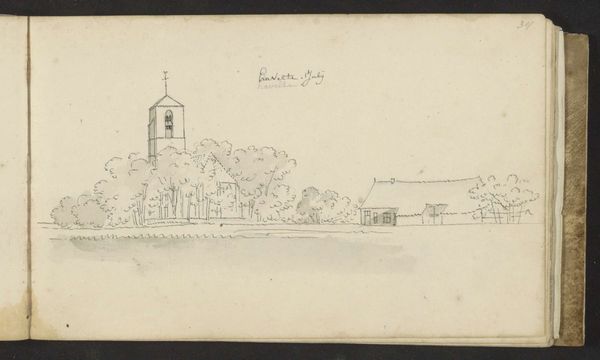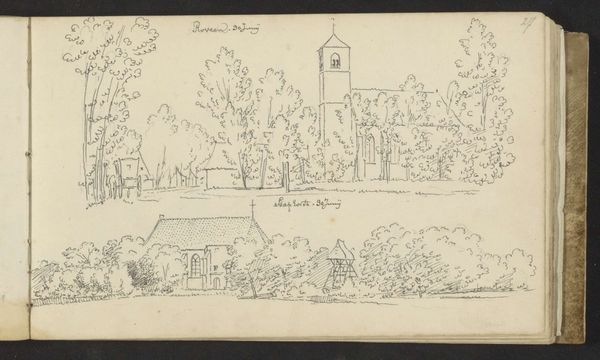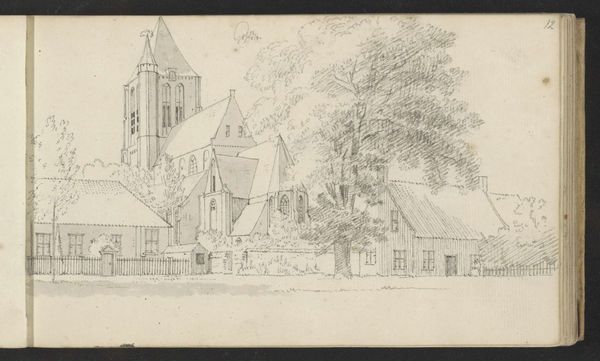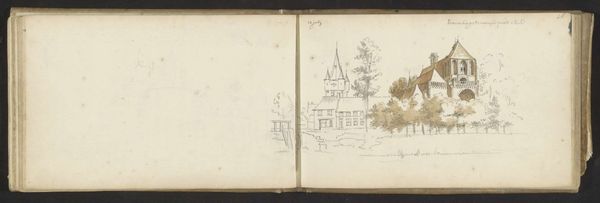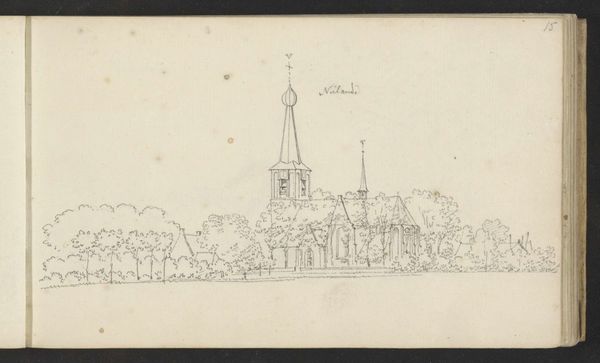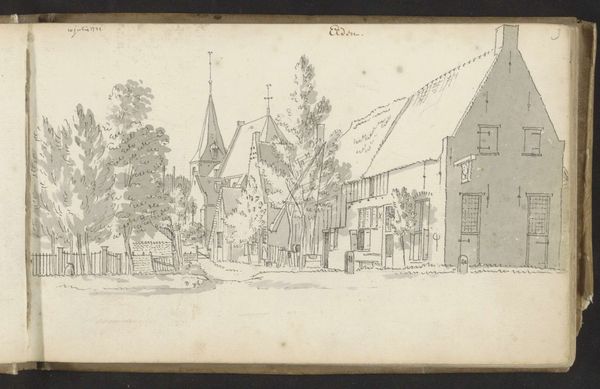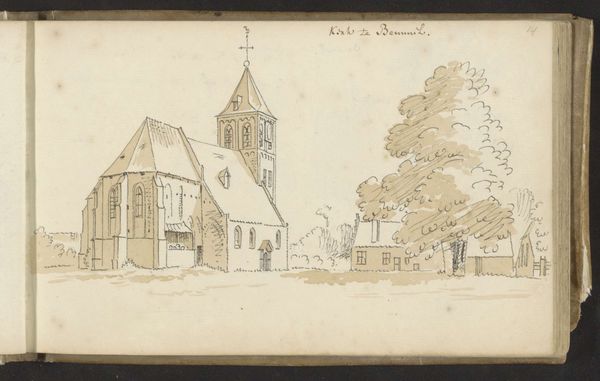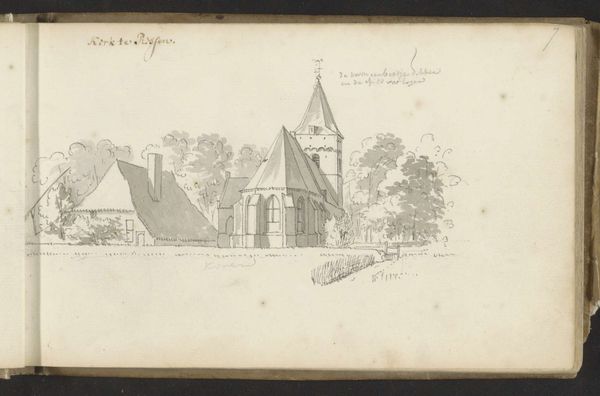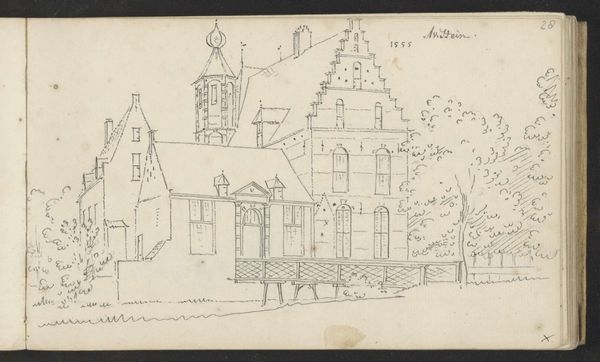
drawing, paper, ink
#
drawing
#
quirky sketch
#
baroque
#
pen sketch
#
sketch book
#
landscape
#
paper
#
personal sketchbook
#
ink
#
sketchwork
#
pen-ink sketch
#
pen work
#
sketchbook drawing
#
cityscape
#
genre-painting
#
storyboard and sketchbook work
#
sketchbook art
Copyright: Rijks Museum: Open Domain
Curator: This is "Dorpsgezicht met kerk te Naaldwijk," or "Village View with Church in Naaldwijk," a drawing made in 1731 by Abraham de Haen the Younger. It's currently held in the Rijksmuseum collection. Editor: It feels immediate, doesn't it? Like a quickly captured impression, rendered in ink on paper. The sketchwork almost feels more intimate because you can sense the hand of the artist so clearly. Curator: Absolutely. Haen was known for these types of topographical drawings. Think of it almost as visual journalism of the 18th century, documenting the changing landscape and architectural landmarks. It provided visual records of places for historical purposes. Editor: Looking at the materials though, the choice of ink and paper, the emphasis on line rather than volume, I wonder about the economics of art-making then. Was paper a luxury? Was this method simply most expedient? It communicates something about the production and labor involved in art at the time. Curator: It speaks to accessibility, certainly. These sketches likely functioned as preparatory studies or personal keepsakes more than public art, offering a snapshot of everyday life. The act of documenting shifts from an elite, commissioned activity toward something available to a broader segment of society. Editor: Precisely! The apparent simplicity belies a deep understanding of material and place. The artist seems more interested in capturing the essence of Naaldwijk than rendering it with photorealistic precision. I am intrigued by the architecture, a building of apparent circular plan with very long planks as facade; also the water; how was the community of craftspeople that created the original building portrayed in the image sustained through material means. Curator: Well, this sketch invites reflection on how societal values are expressed in built environments, on the narratives embedded in urban design of that time, in Dutch culture, and how visual representation democratized record-keeping. Editor: I agree. Looking beyond the documentary aspect and towards the production aspect opens so many questions of value and economy. It transforms our perception of the artwork and period, really.
Comments
No comments
Be the first to comment and join the conversation on the ultimate creative platform.
